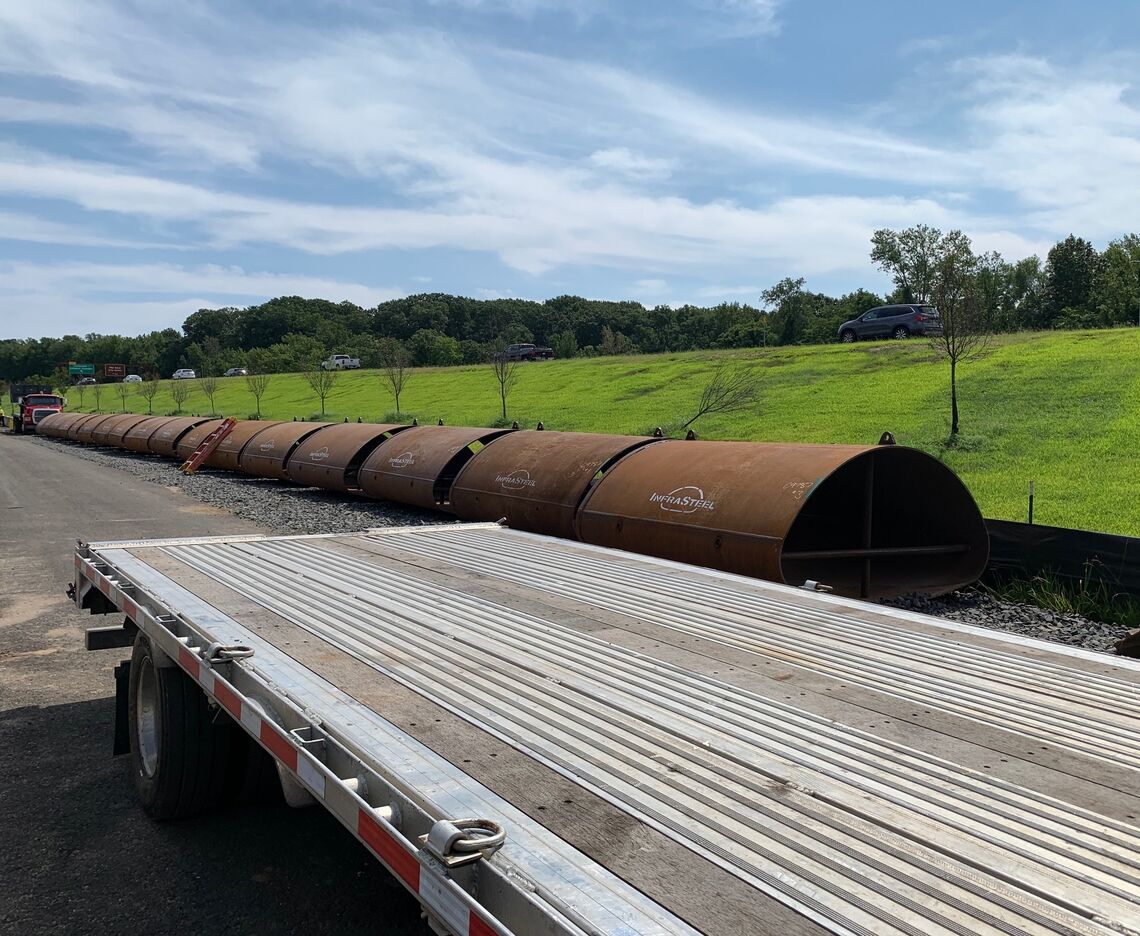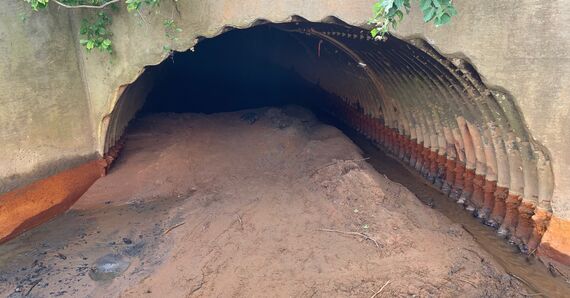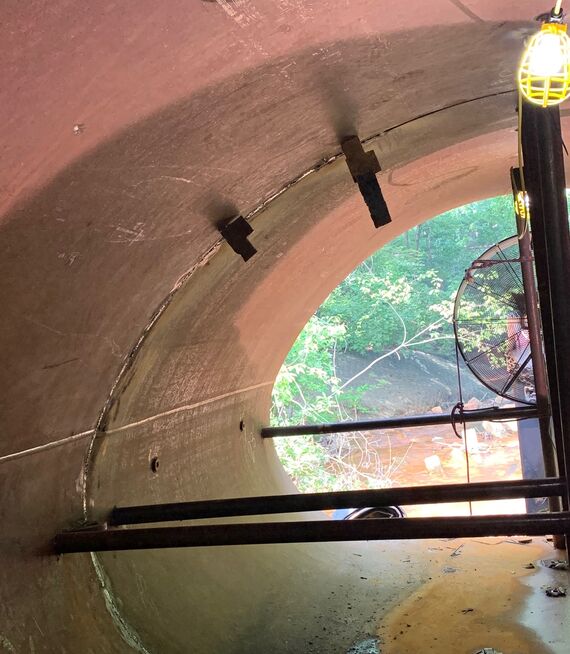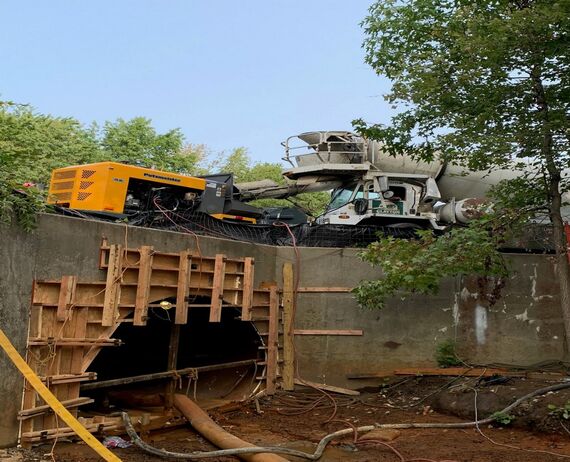
HOLMDEL AND HAZLET TOWNSHIPS CULVERT REHABILITATION PROJECT
HOLMDEL & HAZLET TOWNSHIPS, NJ
Maintaining culverts that carry drivers on the Garden State Parkway and New Jersey Turnpike is essential for safe, reliable, and efficient travel. The work through Holmdel and Hazlet included the structural rehabilitation of old culverts along with repairs/replacement of immediately adjacent drainage features.
THE CHALLENGE
The New Jersey Turnpike Authority (NJTA) proposed rehabilitating two culverts that convey Luppatatong Creek under the Garden State Parkway (GSP) at Milepost (MP) 117.4 in Holmdel Township and at MP 117.85 in Hazlet Township.
The corrugated metal arch plate culverts (CMAP) were badly deteriorated, exhibiting multiple areas of 100% section loss (corrosion holes), infiltration of soil surrounding the culvert, deformation and distortion of the original culvert geometry, and failure/separation of the bolted metal arch plate joints.
The deformation and distortion of the culverts reduced their hydraulic capacity. In the areas of 100% section loss, the soil surrounding the culvert infiltrated the culvert, which resulted in a void around its exterior.
CMAP culverts require the support of the surrounding soil to maintain their geometry and strength. As the surrounding soil washed into the culverts, the culverts lost their hoop strength and started to deform. As additional soil eroded into the culvert, the voids propagated to the ground surface above the culvert, leading to a sinkhole.
Depending on the location of the areas of section loss of the culvert, these sinkholes can form in the travel lanes of the roadway, resulting in damage to vehicles and temporary lane closures. The condition of these culverts indicated that they were at or exceeded their useful service life.



HOW WE HELPED
McCormick Taylor conducted a field inspection and performed alternative analysis and final design to rehabilitate or replace the culverts. We were also responsible for the required hydrologic and hydraulic (H&H) analyses to obtain the Flood Hazard Area and Freshwater Wetland permits.
For both culverts, McCormick Taylor reviewed the as-built drawings and performed field investigations of the culvert to gather data on the structure and surroundings.
The team inspected the area as necessary to complete the tasks laid out in the scope of work. The culvert at MP 117.85 is 90'-0" long with an opening of 14'-2" x 8'-10" CMAP with a concrete-lined invert and crosses under the inner southbound lanes of the GSP.
RESULTS
The completed project ensures the stability of the roadway and the safety of the traveling public above for many years to come.
Methods used to rehabilitate the culverts involved slip lining the host culverts with specially fabricated steel arch sections that had full penetration welded joints and ¾-inch wall thickness. The geometry and interior roughness of the job-specific steel sections were designed to restore the hydraulic capacity of each culvert. The fully welded joints and substantial wall thickness were selected to provide the required structural integrity of the culverts and extend the service life of the culverts for an additional 75 to 100 years.
AWARDS
2020 New Jersey's Leading Infrastructure Projects
